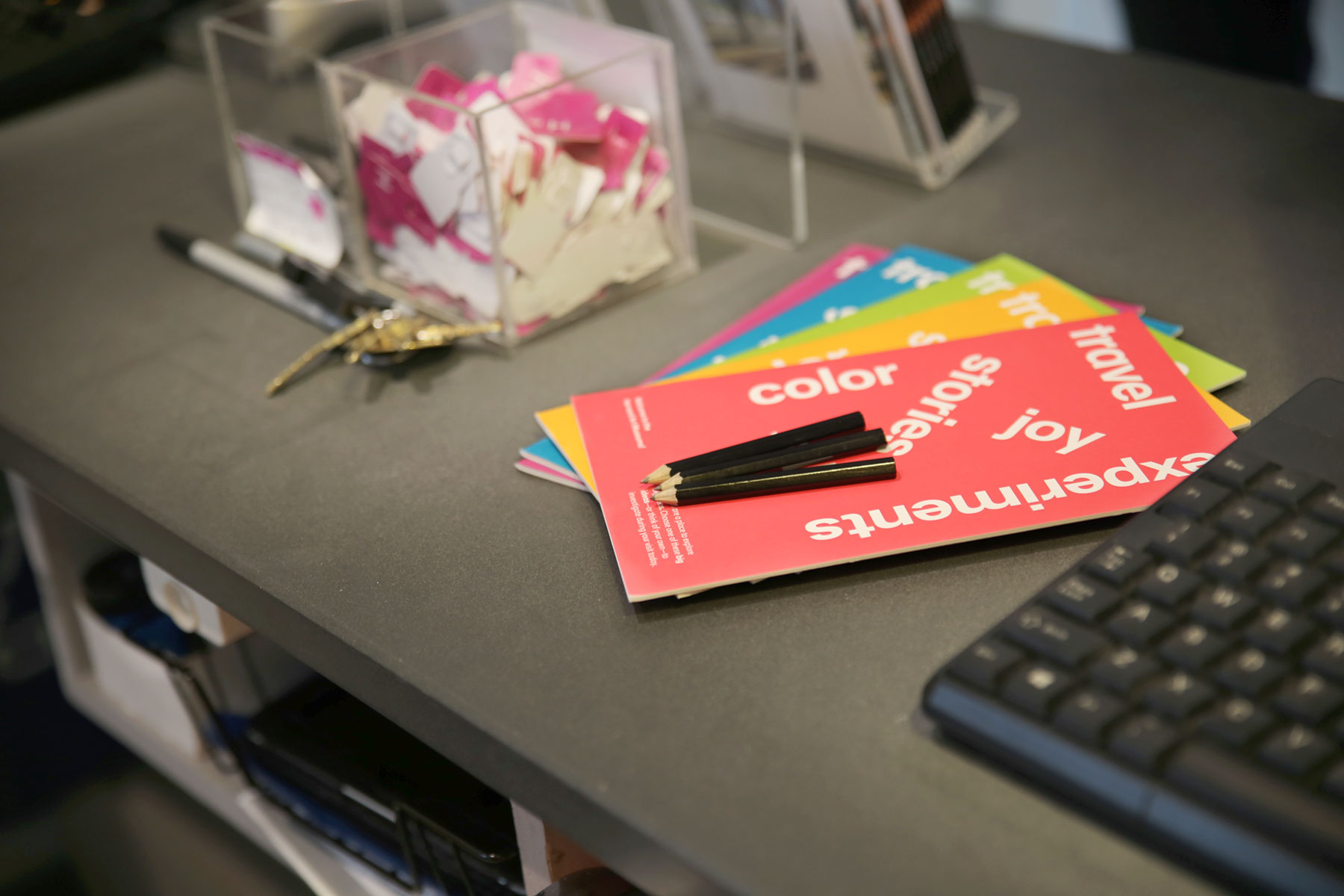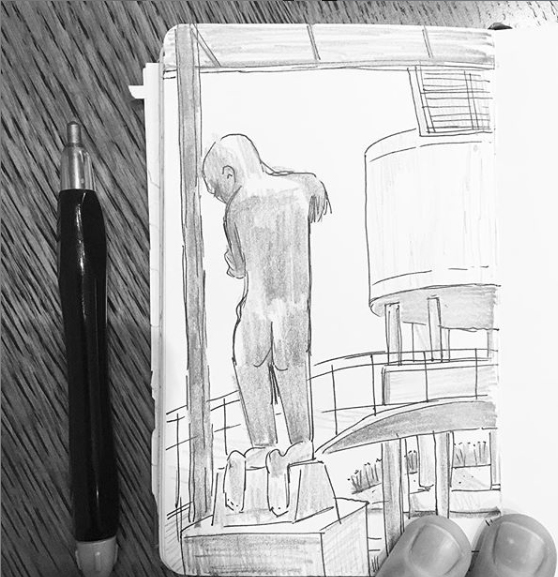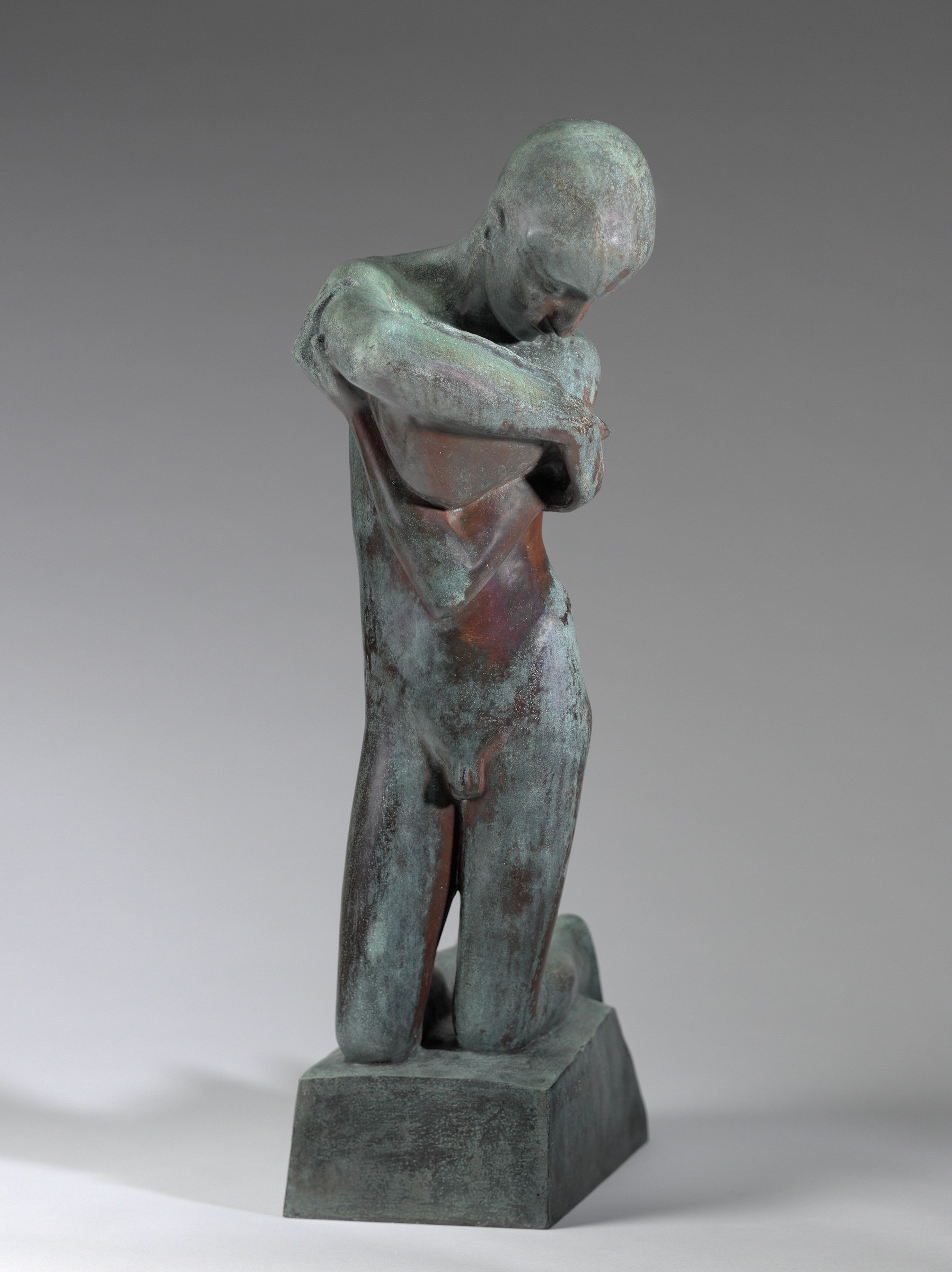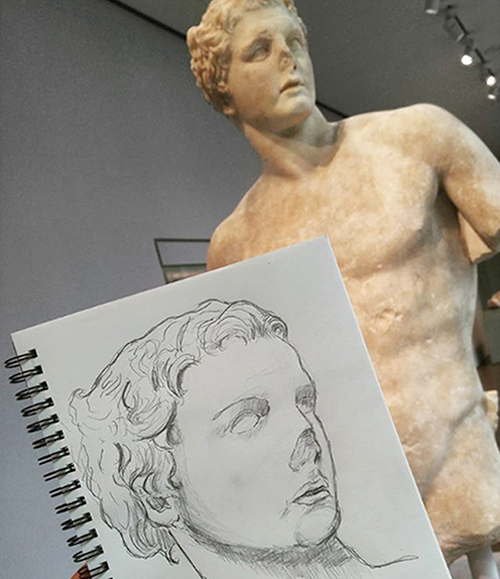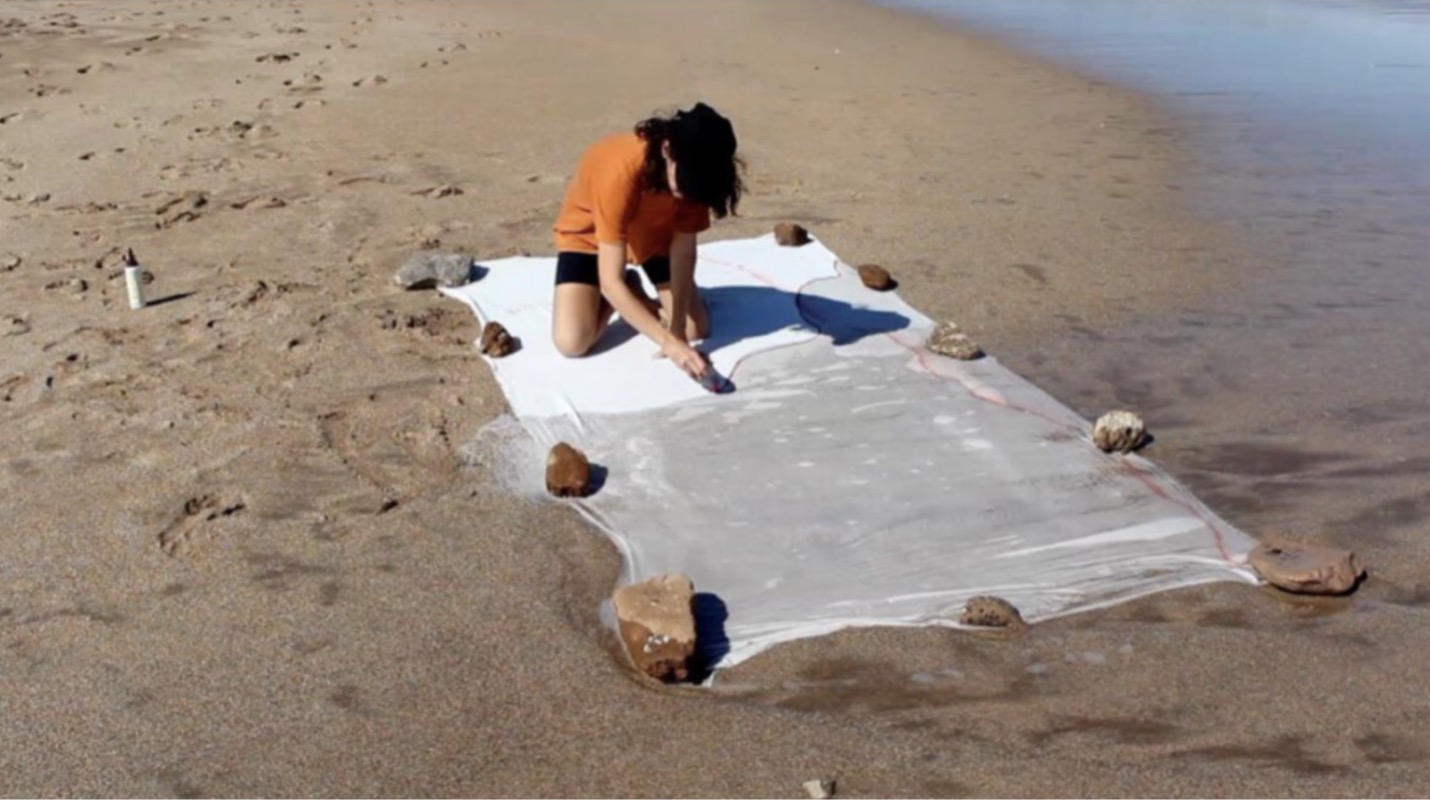Walking around the galleries, you might notice some visitors sketching in their notebooks. Some might be inspired to draw Van Gogh’s Self-Portrait; others might find a comfortable spot in front of Calder’s sculpture Little Blue Under Red to draw its edges.
Among our visitors are those who have dedicated some aspect of their lives to art, as well as students and families with young children. All of them know that new ways of seeing can emerge when pencil meets paper.
Many visitors bring their own sketchbook and pencil (no pens are allowed in the galleries). At our admissions desk, our youngest visitors can ask for a free sketchbook and pencil (and for adults, paper and pencil). Sophie Pratt, shop associate in Visitor Services, said children have chosen a wide variety of subjects to sketch, but a favorite is Carlos Amorales’s centrally-located Triangle Constellation, hanging above the courtyard.

